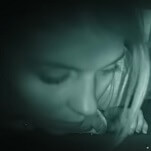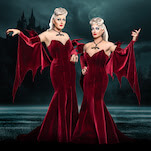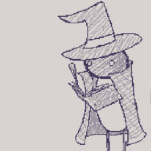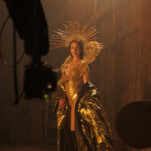Ales Kot and Michael Walsh’s Zero #1 was an incredible, action-packed debut for one of 2013’s best new comics, making them an ideal team to relaunch Marvel’s Secret Avengers. While the previous volume took some time to find its footing, it developed into a tense, unpredictable title exploring the moral middle ground inhabited by S.H.I.E.L.D., especially once Kot joined departing writer Nick Spencer to co-plot and script the final arc, which saw a noted increase in visual experimentation and sheer mindfuckery. Kot and Walsh, with colorist Matthew Wilson and Zero letterer Clayton Cowles, take a more comedic approach for the new Secret Avengers #1 (Marvel), keeping the stakes high for the characters but balancing the superhero intrigue with some much-appreciated humor. It’s an energetic, delightfully witty debut that wastes little time diving into the action, establishing an atmosphere of dynamic fun while setting up a slew of plot threads for future issues.
That humorous angle is immediately apparent from the cover by Tradd Moore (who also worked with Kot on Zero), presenting the team line-up in an exaggerated, cartoonish style. While Nick Fury, Hawkeye, Black Widow, and Spider-Woman stand there looking like badasses, Agent Phil Coulson is being pulled out of the way by M.O.D.O.K., the giant-headed Jack Kirby-created supervillain that Kot added to the book’s cast at the end of the last volume. It’s as if M.O.D.O.K. has crashed a photo shoot and is trying to make his way to the front of the group, a plot foiled by stern-faced Coulson, who manages to hold back the Mental/Mobile/Mechanized Organism Designed Only for Killing until they get the shot.
M.O.D.O.K. is one of this issue’s primary sources of comedy thanks to his dynamic with S.H.I.E.L.D. director Maria Hill (“relationship status: It’s complicated”). The character’s entire gimmick is that he’s a massive head with tiny arms and legs, so of course he’s an egomaniac desperate to display his superiority at every turn. When Hill corrects M.O.D.O.K. for his use of a quote from Shelley’s “Ozymandias,” he tries to prove that he’s smarter than her by shouting random verse written by Horace Smith, a friend of Shelley’s who was in direct competition with the poet. It proves nothing, but it’s good for a laugh, especially when paired with Walsh’s dramatic facial expressions for the semi-reformed villain.
While Walsh’s art is strongly reminiscent of David Aja, there’s a more animated quality to his linework that helps accentuate the comedy and intensifies action sequences. Zero #1 was especially notable for the brutality of its extended fight sequence, and while the battles in this issue aren’t nearly as graphic, they still maintain that exceptional sense of movement and force. There’s an astounding level of detail in Walsh’s environments, best exhibited in a page that reveals the huge arsenal of weapons hidden in the bathhouse, which includes rocket launchers, machine guns, a chainsaw, and most importantly, a pair of Hulk hands.
Matt Wilson is one of the best colorists working in the industry, and he brings a vivid, heavily suggestive palette to the title that would make classic Nick Fury: Agent Of S.H.I.E.L.D. artist Jim Steranko proud. He has a sharp understanding of using color to evoke specific feelings and accentuate the rhythm of Walsh’s artwork, applying less color variation during quieter scenes and turning up the volume during fight sequences. A hyperkinetic page showing Nick Fury fighting The Fury, a cybiote created during Alan Moore’s Captain Britain run, quickly cycles through green, yellow, orange, purple, and red backgrounds to make each hit stand out. A later fight scene with Hawkeye, Black Widow, and Spider-Woman uses a similarly alternating palette, although in that sequence Wilson assigns specific hues to the three characters. The creative synergy on this title is extremely tight, and hopefully a new #1 will help bring more readers to a title that deserves the attention. [OS]
Before Mark Millar made a name for himself writing mature-readers comics like
Wanted and
Kick-Ass, he wrote exceptional all-ages Superman stories based on
Superman: The Animated Series, exhibiting a talent for telling fantastic stories without resorting to shocking, provocative plot twists. Millar is at his best when he embraces a lighter, fun-loving quality in his work, and that sense of whimsy makes
Starlight #1 (Image) the writer’s strongest debut in years. Teaming with artist Goran Parlov and colorist Ive Svorcina, Millar details the thrilling past and depressing present of Duke McQueen, a widowed former pilot who crash-landed on an alien planet in his younger years and returned to Earth with a story that made him a laughing stock. His wife, Joanne, stood by him through it all, but when she dies of cancer, Duke finds himself alone and lost in a world that considers him a joke. But that’s when the real adventure begins.
Millar isn’t known for his sweetness, but the most remarkable thing about his story is how well it defines the love between Duke and Joanne. That tenderness is a part of the strong Pixar influence in this first issue, which combines elements of The Incredibles and Up with the space-faring Earthling conceit made popular by John Carter, Flash Gordon, and Adam Strange. And like a Pixar film, Starlight features some breathtaking visuals, beginning with a stunning splash page of the Technicolor alien world, showing an incredible sense of scope and detail that immediately calls to mind the work of comic-book visionary Moebius. Parlov’s work on Punisher Max and Fury Max has given him a reputation for creating impactful, gritty artwork, but the extraterrestrial setting gives him the opportunity to push his imagination and show off his ability to create a sense of spectacular wonder on the page.
The crisp, animated linework is amplified by Svorcina’s evocative color palette, which uses bright pinks, purples, greens, and oranges to emphasize an otherworldly atmosphere for the off-planet sequences set in the past. Those bright hues are replaced by bleak browns and grays when the action moves to the present to show Duke getting ready for his wife’s funeral, expressing how the hero’s life has been dulled by time and loss. That contrast between past and present is further displayed in Parlov’s staging, specifically with two panels that are subtly connected. In the past sequence, there’s a panel showing Duke receiving a medal for saving the alien planet from its tyrannical ruler, a vibrant, triumphant image that has the same angle, size, and location on the page as a drab later panel depicting Joanne’s funeral. It’s a brilliant way of building a visual connection between where Duke was and currently is, and it will be fascinating to see what Parlov does in upcoming issues as Duke’s past becomes his future. [OS]
No matter how many retellings of fairy tales there are, the stories and the genre retain their power. These days, fairy tales are often seen as being for children, but old fairy tales often have a dark streak. Writer Fabien Vehlmann and artist Kerascoët’s
Beautiful Darkness (Drawn And Quarterly) takes this dark streak to create a fairy-tale
Lord Of The Flies that has a disturbing and fascinating
je ne sais quoi.
Princess Aurora is trying to spend time with her beloved Hector, only for her whole world to fall apart. She is forced out of her home, which we see is the body of a young girl. The body of a dead young girl. Aurora and the other fairy-tale beings who had once lived in this girl find themselves in a forest where they have to struggle for survival. Animals run off with some of them, and they are also vulnerable to the whims of the environment and starvation.
At first Aurora does everything she can to make things better. Other characters, however, show different levels of amorality and immorality. Some do horrifying deeds without any thought and with a pristine innocence, while other characters surely know that what they’re doing is cruel and barbaric to others. A girl whose looks make her an outsider is suffocated to death for the sin of her face and a girl with a health issue is tricked so that another person can eat her food. At first it seems that Aurora is the one good fairy-tale being here, the one who will see the others through. But even her kindness and innocence will be tested as the others around her descend into chaos.
Kerascoët’s artwork is done in watercolor and is often overly stylized to have a sweet, cartoonish quality. At other times, however, the art turns for a gritty realism. The fairy-tale creatures are the most stylized, while the humans around them come out in great detail. At times the art goes for the serene and the colorful; on other pages it brings out all its gruesomeness with images of excess blood and decay. And then, quite frequently, the art shows a mixture of both. Beautiful Darkness is one of those stories open to multiple interpretations. It’s unnerving and eerie, and while an easy analysis may remain elusive, it has the power to stay in the mind of its readers. [DD]
One of the great series to come out of DC’s defunct Wildstorm imprint, Warren Ellis, John Cassaday, and Laura Martin’s
Planetary examines a century of pop culture through a riveting story about three archaeologists of the unknown. The modern classic is collected in its entirety in
The Planetary Omnibus (DC), a hefty hardcover designed to look like one of the lead character’s “Planetary Guides,” and it’s essential for anyone desiring a complex, hugely entertaining story with exquisite artwork. Containing all 27 issues of the main series; three one-shot crossovers featuring The Authority, JLA, and Batman; and design concepts by artist John Cassaday, it’s a great value at $75, which comes out to just about as much as it would cost to buy the five trade-paperback collections.
Warren Ellis is a writer with no lack of ambition, but Planetary is one of his most expansive works, exploring major trends in 20th-century comics, literature, and film. Each issue is largely self-contained and usually focuses on a specific topic, including but not limited to the transition from the Golden Age of comics to the Silver Age, Japanese kaiju cinema, and pulp-fiction characters like Tarzan. The series covers a huge range of ideas, and John Cassaday’s artwork, paired with Laura Martin’s perfectly modulated coloring, adjusts beautifully with each new shift in focus.
Cassaday’s widescreen, highly detailed style gives the book a cinematic look that would strain the biggest Hollywood budget, and his ability to cycle through different styles makes him an invaluable asset to the title. That talent is exhibited most clearly in the Planetary/Batman one-shot, which shows the team of archaeologists traveling to Gotham City and encountering all the different versions of the Dark Knight that have existed over the years, ranging from the character’s original Detective Comic #27 appearance to Adam West’s TV version and Frank Miller’s gruff Dark Knight Returns interpretation. That’s just the tip of the artistic iceberg, and each chapter of this omnibus offers astounding visuals that enhance an already captivating story. [OS]
As a legendary historical figure, Joan Of Arc has been fodder for writers and artists throughout the centuries. With
Phantom Thief Jeanne, Vol. 1 (VIZ Media), created by popular shoujo mangaka Arina Tanemura, she gets something of a “magical girl” makeover, but it’s not as bad as that might initially sound. Sixteen-year-old Maron Kusakabe is the reincarnation of Joan (referred to as the French Jeanne D’Arc in the manga), and in this lifetime her goal isn’t just to save her country. Maron has to save the entire universe because the Demon Lord is weakening God’s power by placing demons in paintings. People moved by the art find themselves possessed by demons, and so much damage is being done that God will soon die and humanity will disappear.
Maron becomes Phantom Thief Jeanne, who has to steal the demonic paintings and keep humanity alive. While Maron is the reincarnation of a famous woman, the manga concentrates more on Maron as she is now rather than who she used to be, which makes it work better than a manga that might try to do a “magical girl Joan Of Arc.” The artwork has its share of huge and dewy eyes, a cliché for shoujo manga, but it’s the artwork to expect from Tanemura, whose other shoujo titles in English include Full Moon and I.O.N. Because it’s shoujo, there’s also some romance thrown in, though the mythology to this story is much more interesting than the teen heartthrob element. Phantom Thief Jeanne isn’t the strongest shoujo manga out there, but it’s a cute and enjoyable book. [DD]
And…
Mari Yamazaki’s Thermae Romae, one of the most offbeat and beautifully illustrated manga in recent memory, follows Lucius, an ancient Roman architect who unwittingly finds a talent for time traveling. Water is his domain, and it repeatedly takes him to modern Japan, where he’s been learning more about architecture and salesmanship; whatever he learns, he puts to good use on his trips back to ancient Rome. Thermae Romae Volume 3 (Yen Press), the story’s final chapter, opens with Lucius in the present time and continues the arc with Satsuki, a modern Japanese girl who is fluent in Latin. Satsuki brings some romance to the story, but she also supplies an unusual dilemma for the lovers: How are they going to be together when their homes are separated by about two thousand years? The tale continues with its absurd humor (from cartoonish horses to an honest-to-goodness chariot race down the streets of Japan), but also dips into more serious topics, like the last days in the life of Emperor Hadrian. Artistically speaking, mangaka Yamazaki shows off her strong skills, revealing that she’s equally adept at drawing people as she is at drawing the lush and ornate particulars of ancient Rome. Yamazaki repeatedly writes notes to readers about her love of Rome and the research she put into this, and her hard work and adoration are clear on every page… [DD]
With his work on Queen & Country, Gotham Central, Detective Comics, and Lazarus, Greg Rucka has established himself as one of the premier writers of female characters in comic books. Those stories all spotlight tough, fully defined women with their own distinct strengths and weaknesses, but Rucka takes a different approach for his newest female-led title. Veil #1 (Dark Horse) begins with a woman waking up naked and covered in rats in an abandoned subway station, and her lack of an identity is the driving force of the series. Rucka does impressive work capturing the mentality of an amnesiac who is slowly remembering the world, particularly with Veil’s dialogue, which latches on to key words and then creates long streams of rhymes that suggest each new environmental stimulus and set off chain reactions of erratic thought. There’s something terrifying underneath Veil’s wide-eyed innocence, and artist Toni Fejzula captures that dichotomy by using a pastel color palette that is highly unconventional for a horror story. The main character is naked for most of the issue, but Fejzula never sexualizes her, giving her a stiff, straight posture rather than putting her in provocative poses. That unwavering rigidity makes the issue’s final moments very creepy as Veil reveals her bloodthirsty side and shows no emotion in the process, calmly standing by as death surrounds her… [OS]
Combining meticulous woodcut-like illustrations with a pitch-black sense of humor, Tony Millionaire’s Sock Monkey stories are gorgeous, hilarious, and oftentimes disturbing tales following a children’s toy and his alcoholic friend Mr. Crow. Sock Monkey Treasury (Fantagraphics) is an outstanding gateway into Millionaire’s twisted world, collecting eight short stories, the only full-length Sock Monkey graphic novel, and a full-color storybook and graphic novella. That variety of works shows Millionaire’s diversity as an artist, flawlessly working with sharp inks, smooth pencils, and striking colors. Most of the short stories focus on the intersection of nature and domestic society, a combination embodied by Sock Monkey and Mr. Crow, two household playthings modeled after wild animals. The plots become more absurd later in the collection, reaching bizarre heights in the graphic novel The Inches Incident, which sees Millionaire indulging his E.C. Segar influence with a seafaring tale that includes a Popeye cameo. While events often take a weird turn, they can also be quite touching, and the treasury’s final story is a poignant, visually magnificent exploration of imagination and the power of longing for something that doesn’t exist. [OS]








































